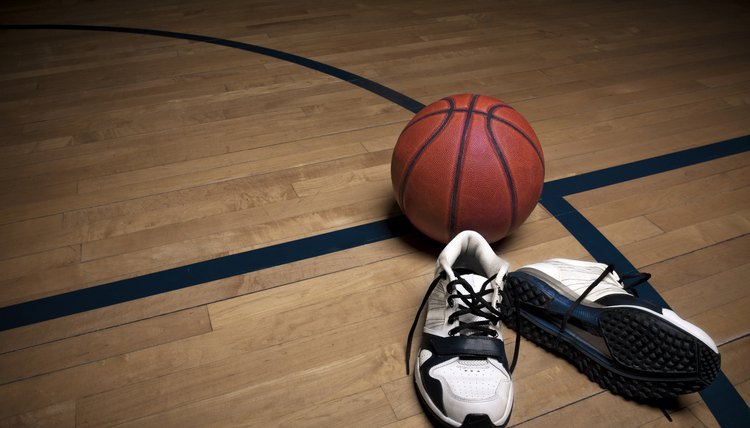What Is the Difference Between Tennis Shoes & Basketball Shoes?

The sports of tennis and basketball involve quick stopping and starting as well as lateral movement. The shoe you choose should offer durability and support during play. Wearing a tennis shoe for basketball or vice versa, though, will not enhance your play. These two types of shoes offer similar features in different packages.
Uppers
Tennis shoes generally have a low top so they remain light and don’t rub against your ankle. Basketball shoes come in high-top, mid-top and low-top versions. Most basketball players, 70 percent according to Dick’s Sporting Goods, wear high-tops because they provide maximum ankle support. The fastest players, only about 10 percent of the playing population, choose low-tops due to their light-weight nature.
Sole Design: Basketball Shoes
The soles of basketball shoes usually feature a herringbone pattern to provide traction during sudden stops and starts. Basketball shoes designed for outdoor play have heavier soles, but most shoes are designed for indoor play.
Sole Design: Tennis Shoes
Tennis shoes feature several different types of sole, depending on the type of surface on which you usually play. Tennis shoes do come in the traditional herringbone pattern, which is usually best on a hard court. Indoor court shoes tend to have a smooth sole that won’t grab the surface of the court or leave marks as you move laterally. Clay-court shoe soles also typically feature a herringbone design, but they are not as durable as basketball shoe soles because the soft nature of the court doesn’t provide a lot of wear and tear.
References
Writer Bio
Andrea Cespedes is a professionally trained chef who has focused studies in nutrition. With more than 20 years of experience in the fitness industry, she coaches cycling and running and teaches Pilates and yoga. She is an American Council on Exercise-certified personal trainer, RYT-200 and has degrees from Princeton and Columbia University.